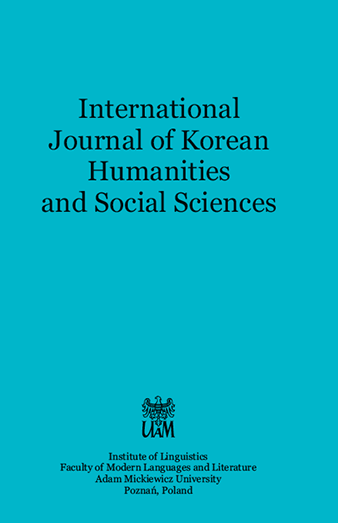Global contents but nationalistic themes: Bong Joon-ho’s “Snowpiercer”
Global contents but nationalistic themes: Bong Joon-ho’s “Snowpiercer”
Author(s): Mansu KimSubject(s): Fine Arts / Performing Arts, Film / Cinema / Cinematography, Sociology of Art
Published by: Uniwersytet Adama Mickiewicza
Keywords: binary opposition ; post-apocalyptic film; ‘Spell of Plato’; hierarchy; film conventions.
Summary/Abstract: Bong Joon-ho’s film, Snowpiercer (2013) is based on a French graphic novel which deals with the people who got on a train that ran continuously around the world in the coming ice ages. At first, the passengers of the train were restricted to the upper classes, but some lower class people happened to get on the train abruptly. It seems to be inevitable to start to struggle between the two classes. In this regards, the theme of this film is focused on the environmental disaster and social stratification. The ruling classes on this train emphasize the order and control. They justify their domination and oppression over the lower classes, assuming that the cause of the disaster lies in the discrepancy which comes from the uncontrolled populations and productions. They use ‘the Spell of Plato’ to prove their logic. According to their logic, the hierarchy must be divided into two (the ruler and the oppressed) or three (guardians, warriors and workers). Every citizen must be satisfied with his social position. Their logics are further reinforced by the gradual ‘piecemeal social engineering’ proposed by Karl Popper. They also emphasize the justification of strong control supported by the Malthusian ‘principle of population’, where the population grows exponentially, but production increases arithmetically. This theory is repeated itself at the commercial movie like Avengers: Infinity War (2018) and Kingsman: The Golden Circle (2017). These movies became the dominant trends which could be named ‘(Post) Apocalyptic Film’. It seems that Bong Joon-ho is willing to follow the trends and conventions of the genre movie as known as Apocalyptic Film. However, by casting Korean actors as third groups of the movie intentionally, he makes it possible to imagine a new world that is different from this frustrating dichotomy (higher’s domination/lower’s oppression). Namgung Minsu and Yona who are acted by two Korean actors are represented as very active and interesting characters who are anticipated to solve the main social problems in the movie; environmental disasters and class conflicts. They show us the possibilities of the new world which can be imagined after the frozen and totally destroyed world is ended. Korean spectators can feel proud of the fact that the heroic and fantastic character of this movie is restricted to two Korean actors. Bong seemed to aim the target of spectators only to Korean. Anyway, he could make a little bit different movie from the conventions of blockbuster a.k.a. disaster movie or apocalyptic movie.
Journal: International Journal of Korean Humanities and Social Sciences
- Issue Year: 8/2022
- Issue No: 1
- Page Range: 7-23
- Page Count: 17
- Language: English

